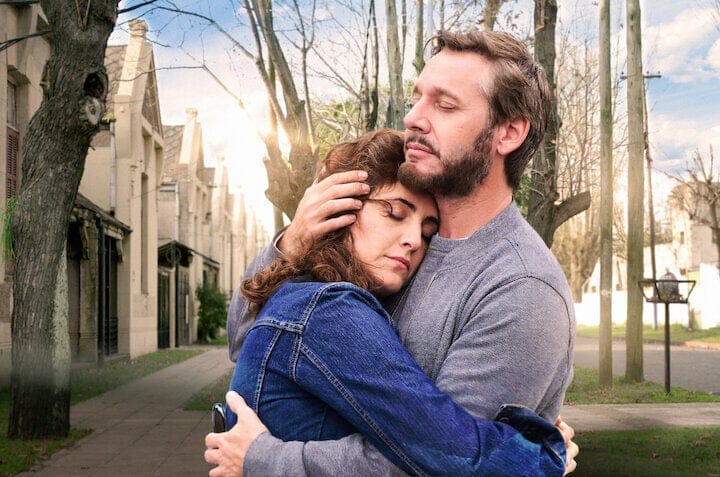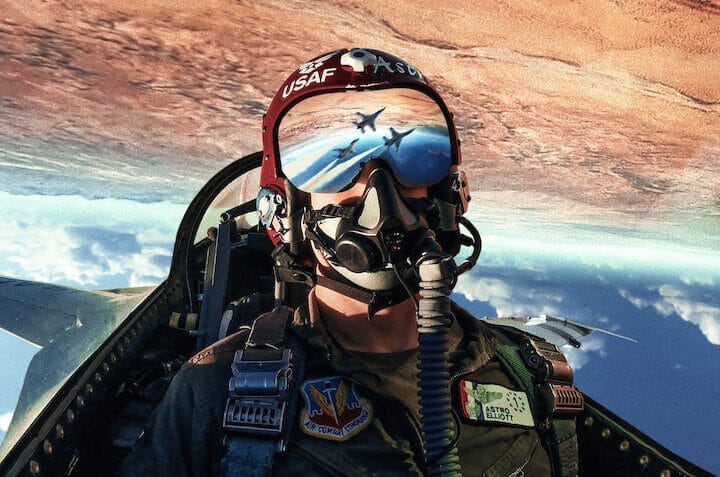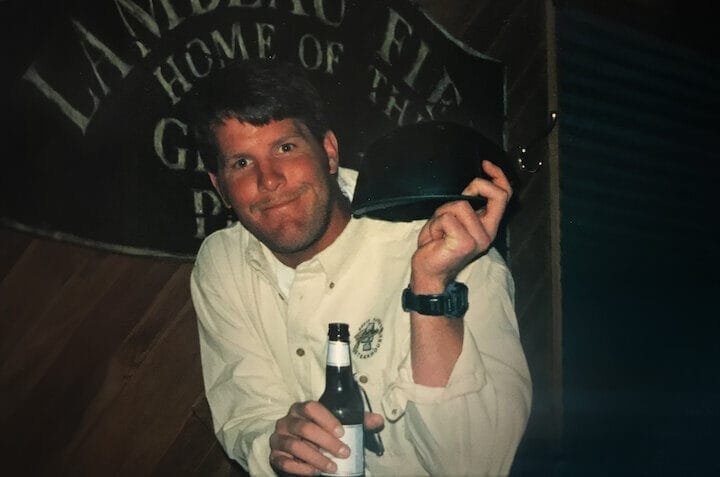Netflix brings us “Oklahoma City Bombing: American Terror,” a documentary directed by Greg Tillman. Thirty years after the deadliest act of domestic terrorism shook the nation’s heartland, its impact remains deeply embedded in the collective psyche. The documentary goes beyond the horrific events to dissect the anti-government sentiments that fueled the attack, raising unsettling questions about the persistence of such extremism in America today.
The Day the Heartland Bled
At 9:02 AM on what began as a bright spring Wednesday in Oklahoma City, a rented Ryder truck packed with a devastating bomb detonated in front of the Alfred P. Murrah Federal Building. The blast, orchestrated by former U.S. Army soldier Timothy McVeigh with assistance from Terry Nichols, ripped through the nine-story structure, instantly reducing a third of it to rubble and pancaked floors. The human cost was catastrophic: 168 people lost their lives, including 19 children, many of whom were in the building’s second-floor daycare center. The youngest victim was just four months old. Over 684 others were injured, some critically. The explosion, estimated to have been caused by a 4,000- to 5,000-pound bomb made from ammonium nitrate fertilizer and fuel oil, was felt for miles and left downtown Oklahoma City resembling a warzone. More than 300 nearby buildings were damaged or destroyed, with the financial toll exceeding $650 million. In the immediate aftermath, amidst the smoke, sirens, and chaos, suspicion initially turned towards international terrorist groups, echoing fears sparked by the 1993 World Trade Center bombing. However, the chilling reality soon emerged: this was an attack carried out on home soil, the deadliest manifestation of domestic terrorism in U.S. history.
The Seeds of Hate: Waco, Ruby Ridge, and the Rise of Anti-Government Fury
“Oklahoma City Bombing: American Terror” compellingly argues that the Oklahoma City bombing did not occur in a vacuum. It meticulously traces the attack’s roots to a specific, virulent strain of anti-government extremism that flourished in the early 1990s, fueled by events that became rallying cries for the radical right and the burgeoning militia movement. The documentary highlights two pivotal incidents: the deadly FBI standoff with the Weaver family at Ruby Ridge, Idaho, and the fiery conclusion to the 51-day siege of the Branch Davidian compound in Waco, Texas – exactly two years prior to the Oklahoma City attack. McVeigh, a Gulf War veteran increasingly disillusioned with the federal government, visited the Waco site during and after the siege. He, along with Nichols and others in the militia movement, viewed Ruby Ridge and Waco as proof of a tyrannical government waging war on its own citizens, particularly those exercising their Second Amendment rights. This narrative was amplified by conspiracy theories about a looming “New World Order” and fears stoked by gun control measures like the Brady Bill. McVeigh saw federal agents as soldiers and chose the Murrah Building, which housed agencies like the ATF, DEA, and Secret Service, as a strike against their command center. “Oklahoma City Bombing: American Terror” effectively portrays how these specific events, filtered through a lens of paranoia and extremist literature like The Turner Diaries, transformed McVeigh’s anti-government sentiment into murderous resolve.
The Manhunt and the Shadow of Conspiracy
The documentary chronicles the massive FBI investigation, codenamed “OKBOMB,” which ultimately involved tens of thousands of interviews and leads and amassed tons of evidence. The narrative underscores how the case was cracked through a combination of meticulous forensic work and remarkable chance. A crucial piece of evidence emerged when investigators recovered the rear axle of the Ryder truck, yielding the Vehicle Identification Number (VIN) that led them to a rental agency in Junction City, Kansas. Eyewitness descriptions from the rental agency helped create a composite sketch of the renter, identified by staff at a local motel as “Tim McVeigh.” Chance proved equally decisive. Just 90 minutes after the blast, Oklahoma Highway Patrol Trooper Charlie Hanger stopped a yellow Mercury Marquis driving without a license plate about 80 miles north of Oklahoma City. The driver, Timothy McVeigh, was arrested for carrying a concealed weapon. When the FBI linked the renter’s name to McVeigh, they discovered their prime suspect was already in custody, just hours away from being released. This fortuitous arrest was critical, as evidence found on McVeigh’s clothing upon arrest contained residue of the chemicals used in the bomb. The investigation quickly uncovered the conspiracy, identifying McVeigh’s Army buddy, Terry Nichols, as a key accomplice who helped acquire materials and build the bomb. Another Army friend, Michael Fortier, knew of the plot and later testified against McVeigh and Nichols in exchange for a reduced sentence. “Oklahoma City Bombing: American Terror” also acknowledges, though perhaps doesn’t dwell on, the persistent conspiracy theories that have shadowed the official account for decades – questions about other accomplices (“John Doe #2”), alleged links to white supremacist compounds like Elohim City, or even foreign involvement. While the documentary largely seems to adhere to the official investigation’s findings, its exploration of McVeigh’s connections to the broader extremist movement implicitly touches upon the murky aspects and unanswered questions that continue to fuel alternative theories, leaving the viewer wondering about the full extent of the network that supported McVeigh’s path to violence.
The Scars That Remain: Voices of the Survivors and the Lost
Where “Oklahoma City Bombing: American Terror” makes its most profound impact is in its portrayal of the human toll. The documentary skillfully juxtaposes the abstract, hate-fueled motivations of the perpetrators with the tangible, lifelong suffering inflicted upon victims, survivors, and their families. Through archival footage and potentially new interviews, the film gives voice to those whose lives were irrevocably changed. We hear stories like that of Florence Rogers, who miraculously survived on a narrow ledge after her third-floor credit union office was obliterated, losing eight colleagues she had worked with for decades. The film features PJ Allen, the youngest survivor of the bombing at just 18 months old, who still bears the physical scars—severe burns and lung damage affecting his voice and breathing—but stands decades later as an example of resilience and purpose. The grief of families is palpable, exemplified by Aren Almon, whose one-year-old daughter Baylee became an unwitting symbol of lost innocence through an iconic, heartbreaking photograph taken by an amateur photographer at the scene. Firefighter Chris Fields, captured in that photo cradling Baylee, represents the thousands of rescuers who confronted unimaginable horror and trauma.
Justice, Security, and the Legacy of Fear
The documentary examines the swift and complex legal and policy responses to the bombing. Timothy McVeigh’s federal trial was moved to Denver due to concerns about finding an impartial jury in Oklahoma. He was convicted on 11 counts, including the murders of eight federal law enforcement officers, and sentenced to death. McVeigh was executed by lethal injection. Terry Nichols faced a more complex legal path. In his separate federal trial, he was convicted of conspiracy and eight counts of involuntary manslaughter related to the slain federal agents. However, the federal jury deadlocked on the death penalty, resulting in a sentence of life without parole. Since the federal charges only covered the eight federal agents, the state of Oklahoma subsequently tried Nichols for the murders of the remaining 160 victims, plus one count of fetal homicide. A state jury convicted him on all 161 murder counts but again deadlocked on the death penalty, leading to another sentence of life without parole. This dual prosecution underscored the legal system’s determination to hold Nichols accountable for every life lost, even if the ultimate penalty remained elusive.
Governmental Aftermath and Legislative Changes
Beyond the trials, the bombing spurred significant legislative and policy shifts. Congress passed the Antiterrorism and Effective Death Penalty Act (AEDPA). While aimed at deterring terrorism and providing justice for victims, AEDPA controversially restricted habeas corpus appeals, tightened immigration laws, and expanded federal authority over terrorism-related crimes. Following a vulnerability assessment ordered by President Clinton, Executive Order 12977 established the Interagency Security Committee (ISC) to create uniform security standards. This led to the widespread implementation of previously uncommon measures: concrete barriers (initially Jersey barriers, later permanent installations), increased building setbacks from streets, enhanced visitor screening (magnetometers, X-ray machines), blast-resistant windows and structural design, and heightened surveillance.
“Oklahoma City Bombing: American Terror” Today: Echoes of Extremism
The true power of “Oklahoma City Bombing: American Terror” lies in its argument for the bombing’s urgent contemporary relevance. It positions the attack not merely as a historical event, but as a terrifying precursor to the anti-government extremism, conspiracy theories, and potential for political violence that continue to trouble the United States. The film suggests that the ideologies motivating McVeigh—deep distrust of federal authority, perceived threats to liberties, and a willingness to resort to violence—have not disappeared but have evolved and found new platforms. The bombing occurred on April 19, 1995.
Where to Watch “Oklahoma City Bombing: American Terror”













